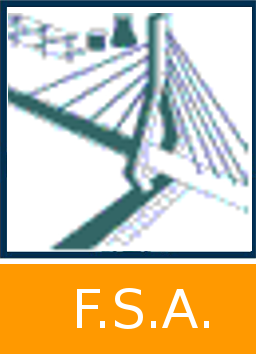Radiometric model of a hyperspectral instrument for Earth observation
Feres Molina, Luis Fernando 
Promotor(s) :
Bruls, Olivier  ;
Stockman, Yvan
;
Stockman, Yvan 
Date of defense : 25-Jun-2018/26-Jun-2018 • Permalink : http://hdl.handle.net/2268.2/4668
Details
| Title : | Radiometric model of a hyperspectral instrument for Earth observation |
| Translated title : | [fr] Modèle radiométrique d'un instrument hyperspectral pour l'observation de la Terre [es] Modelo radiométrico de un instrumento hiperspectral para observación de la Tierra |
| Author : | Feres Molina, Luis Fernando 
|
| Date of defense : | 25-Jun-2018/26-Jun-2018 |
| Advisor(s) : | Bruls, Olivier 
Stockman, Yvan 
|
| Committee's member(s) : | Kerschen, Gaëtan 
Golinval, Jean-Claude 
|
| Language : | English |
| Number of pages : | 68 |
| Keywords : | [en] Hyperspectral Instrument [en] Earth Observation [en] SNR [en] Radiometric model [en] Satellite |
| Discipline(s) : | Engineering, computing & technology > Aerospace & aeronautics engineering |
| Target public : | Researchers Professionals of domain Student General public Other |
| Institution(s) : | Université de Liège, Liège, Belgique CSL ( Centre Spatial de Liège), Liège, Belgique |
| Degree: | Master en ingénieur civil en aérospatiale, à finalité spécialisée en "aerospace engineering" |
| Faculty: | Master thesis of the Faculté des Sciences appliquées |
Abstract
[en] In the near future, it is expected to have an increased number of satellites with hyperspectral imager instruments in orbit. Consequently, in the context of an internship and a Master’s thesis performed in Liège Space Center (CSL-Acronym in French) it has been proposed to model a hyperspectral instrument for Earth observation (HIEO). Indeed, a few models of hyperspectral devices from satellite imaginary have been founded and none of them provides a clear estimation of the photon-electron energy nor its SNR (Signal to Noise ratio) transfer from a standard scene until reaching the detector. In order to reach this objective, three modulus were built; the scene, the optical-mechanical system and the photon-detector. This project aims to build and implement from scratch a radiometric model of a hyperspectral instrument for Earth observation, using key data parameters (KDP) for the scene module, optical module and detector module , in the narrow region VNIR (Visible and Near Infrared domain from 400 nm to 1100 nm).
It was found that the modeled optical-detector system convert a tiny amount of photons into electrons. Furthermore, higher values of SNR (>100) were found in the region between 500 nm to 900 nm. Moreover, the SNR drastically drops towards the extremes of the spectrum. In conclusion, the relation signal noise has a non-linear relation between the grating efficiency, quantum yield and the quantum efficiency. Thus, futures studies could improve the prediction of these parameters to have better data for the correction of hyperspectral radiance profiles.
File(s)
Document(s)

 Radiometric_Model_of_a_hyperspectral_instrument_for_earth_observation.pdf
Radiometric_Model_of_a_hyperspectral_instrument_for_earth_observation.pdf
Description: Thesis Luis Feres Molina
Size: 7.24 MB
Format: Adobe PDF
Annexe(s)
Cite this master thesis
The University of Liège does not guarantee the scientific quality of these students' works or the accuracy of all the information they contain.


 Master Thesis Online
Master Thesis Online



